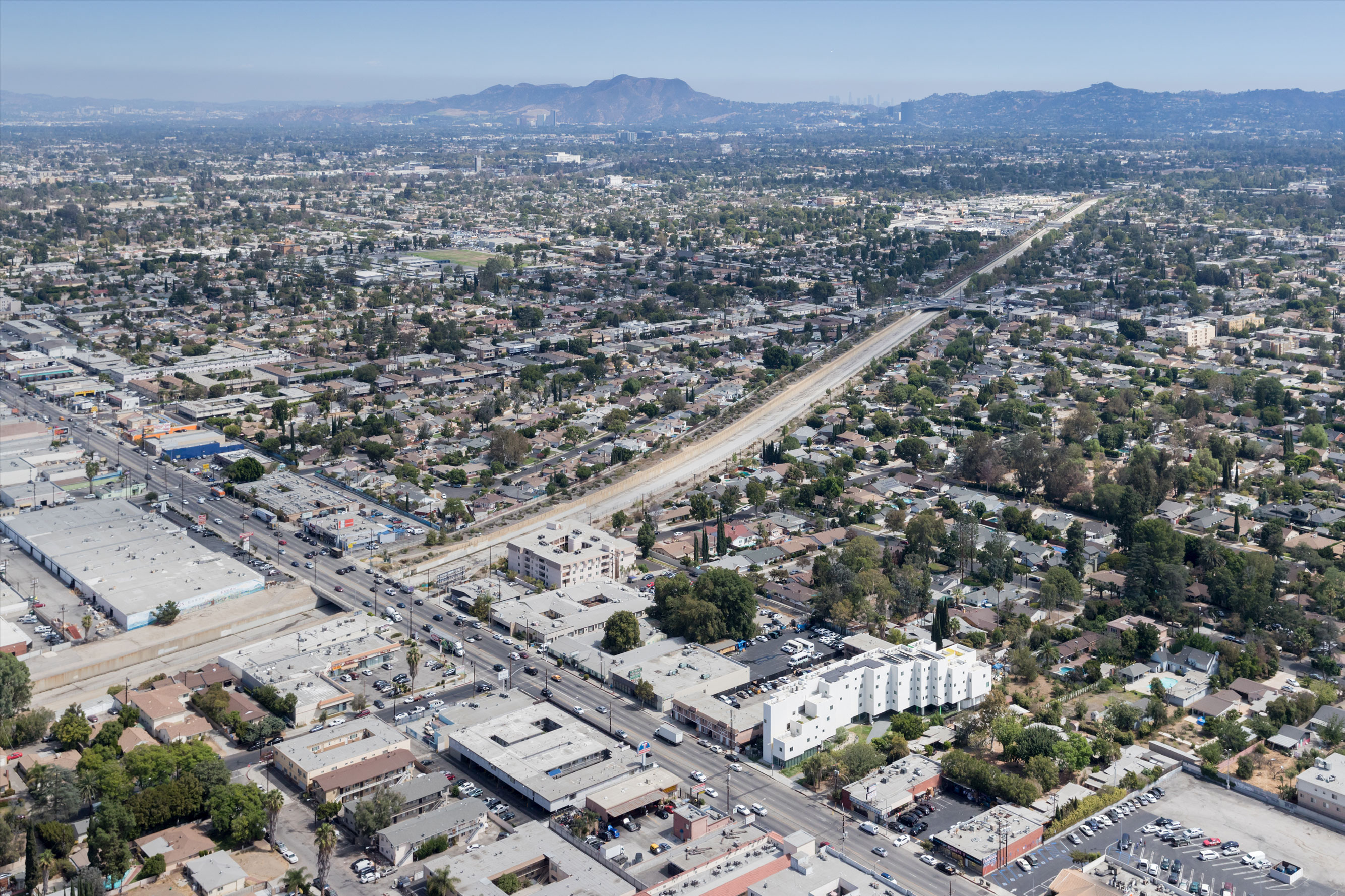MICHAEL MALTZAN /
COULD THE SUBURBS
BE COMING BACK
TO GET US?
In the city where I live and practice the majority of its development history has been defined by the unabated construction of a seemingly endless carpet of single family houses, sprawling horizontally and endlessly outward in all directions.
Dropped incrementally within that metro-texture sits a house, and another, and another… each within its “cordon sanitaire” consisting of a front, back, and side yard, separating neighbor from neighbor sometimes with an empty strip of space, although just as often that space is filled by the calliope of diverse horticulture that can root here. That space, and its sometimes garden, is a luxury that came to represent the idea of this region, even as it hid the more troubling and insidious social separations and apartness that have come to plague Los Angeles and its aspirations as a “multi-cultural” city.
The trajectory of this kind of low scale sprawl has been changing though over the past decade, with a pivot toward forms of greater urban density. It is the result of the practical need for more housing based mainly on the constant increase in population, but it is also the effect of years of work to increase mass transit networks, to create stronger social centers, and to plan more efficient resource management. It has not come without a fight though…
It is a few years ago, and we are in the midst of working to get approval for a 5-story tall 70-unit affordable housing project in the middle of the San Fernando Valley, which is the quintessential Southern California post-war built landscape. The residents who will live in the building are formerly homeless military veterans. The site is an abandoned lot of land, long and thin in plan, it is a typical site along a typical main “strip” of mostly one-story commercial shopfronts… a grocery shop, a bail bonds place, a liquor store… the other end of the site sits next to a cul-de-sac of single-family houses. We are proposing a building that will “float” in a new garden landscape that attempts to weave that new garden into the scattered private gardens of the surrounding neighborhood and expanding a sense of collective and connected landscape.
The neighborhood comes out in force to protest the new building. The arguments are not new, but they are heated. “This project will ruin the character of the community”, “It is out of scale”, “We are building too much density in the City”. Even with the knowledge that the new apartments will serve a part of the population that already “lives” in the community, and that they will help to stabilize a growing threat to that community around unaffordability and homelessness, the fear of what and who density might bring allows for little compromise in the arguments. After months of public meetings and debate the building finally gets its approvals to go forward, but the approval feels fragile and tentative.
The ability to address the very real social, economic, and equity issues for this region depends in large part on forms of greater density, but support for this emerging new form of the city is still a long way off.
California has been seen as a positive example during this pandemic. Our “curve” has been noted as being kept under reasonable control owing largely to the early actions of State and local governments… but off in the distance one can begin to hear a collective thought forming that low density and separation has played just as important a role. It is inevitable that this argument will be heard more in the public debates against a denser future.
It will be a powerful point, especially when fueled by the underlying fears and anxieties that will be the chronic lingering scars long after the acute traumas to our collective psychology begin to fade. Momentum toward an evolved city, one that more closely represents the dynamic changes the region continues to grapple with has a new argument about an old form to contend with again.

